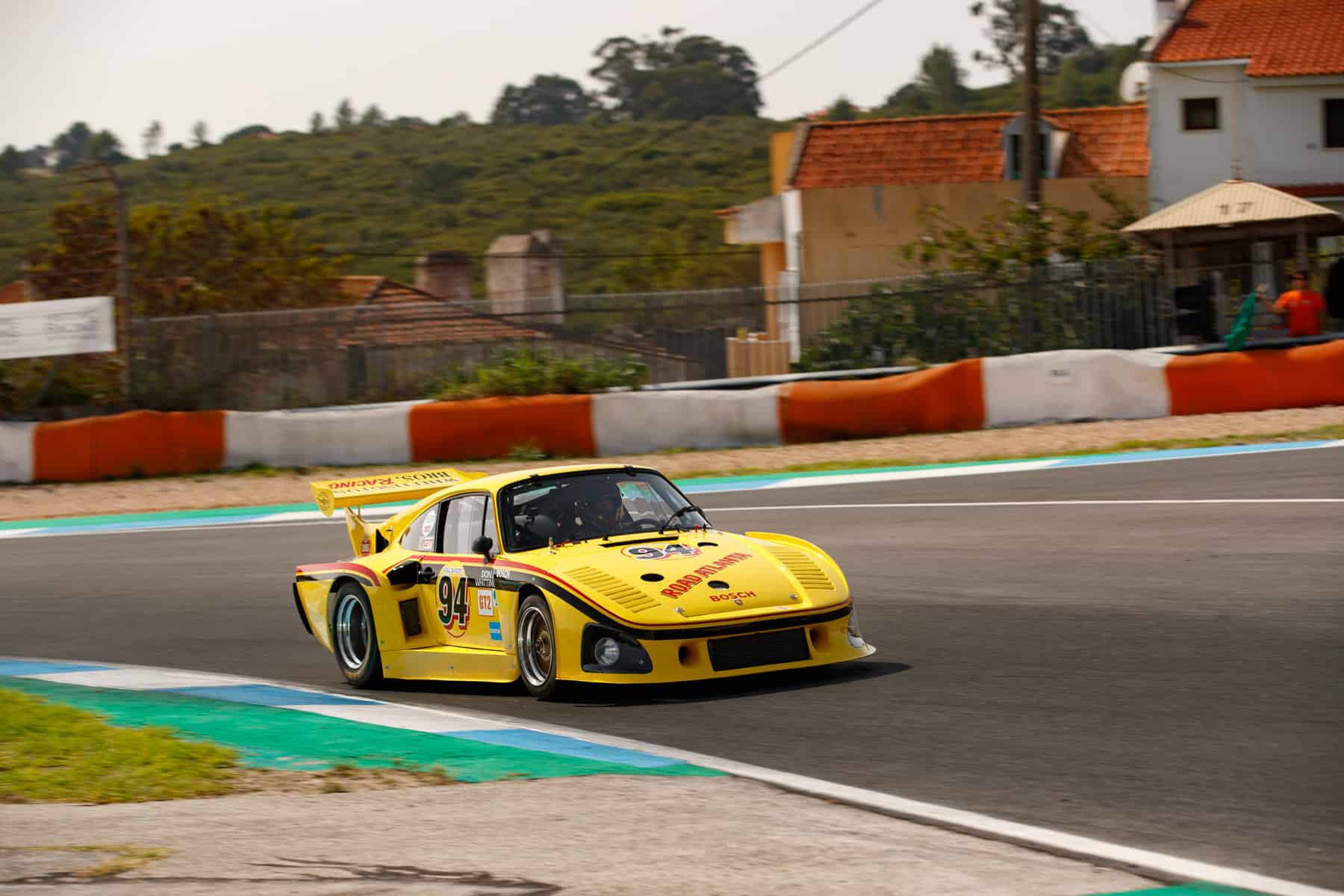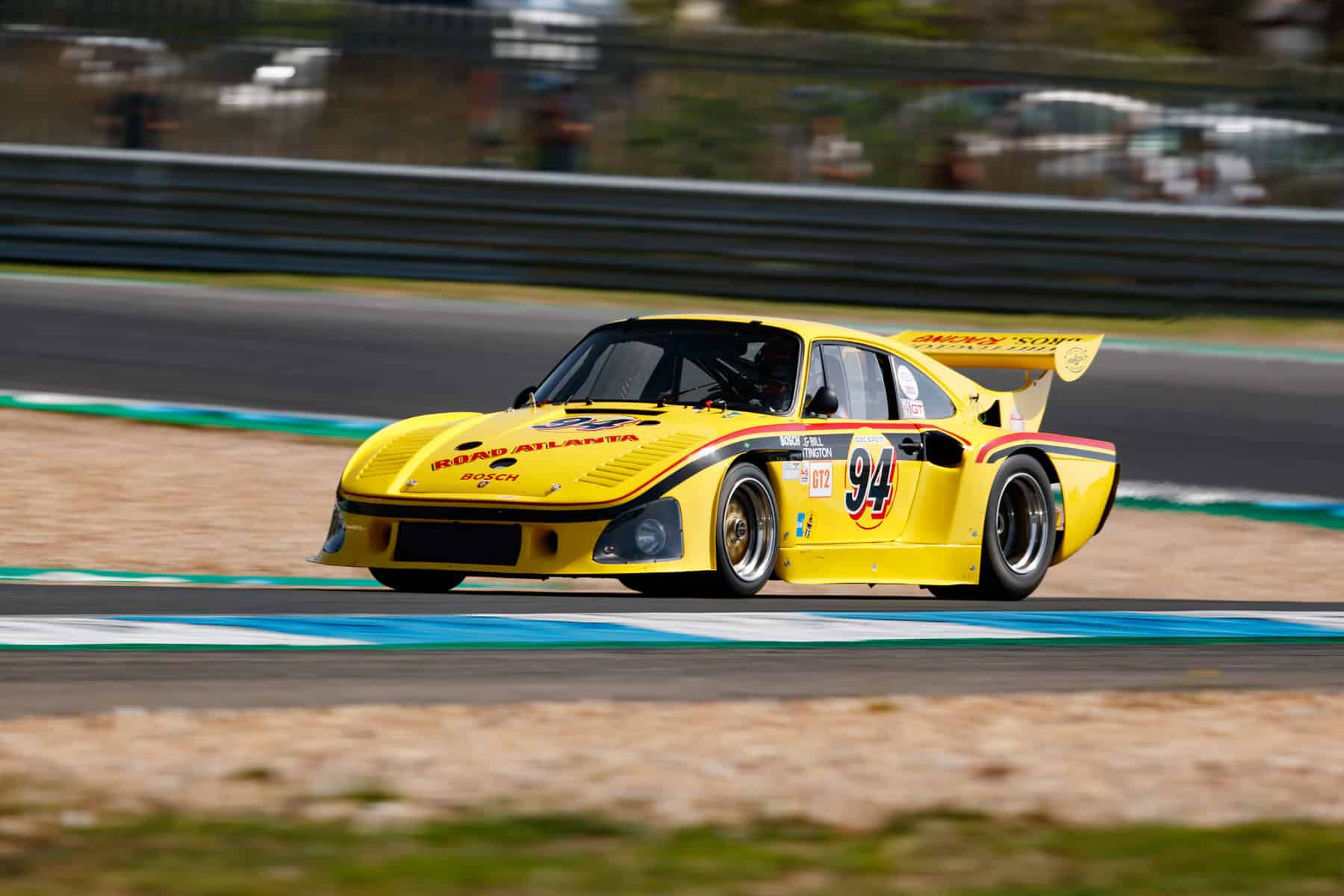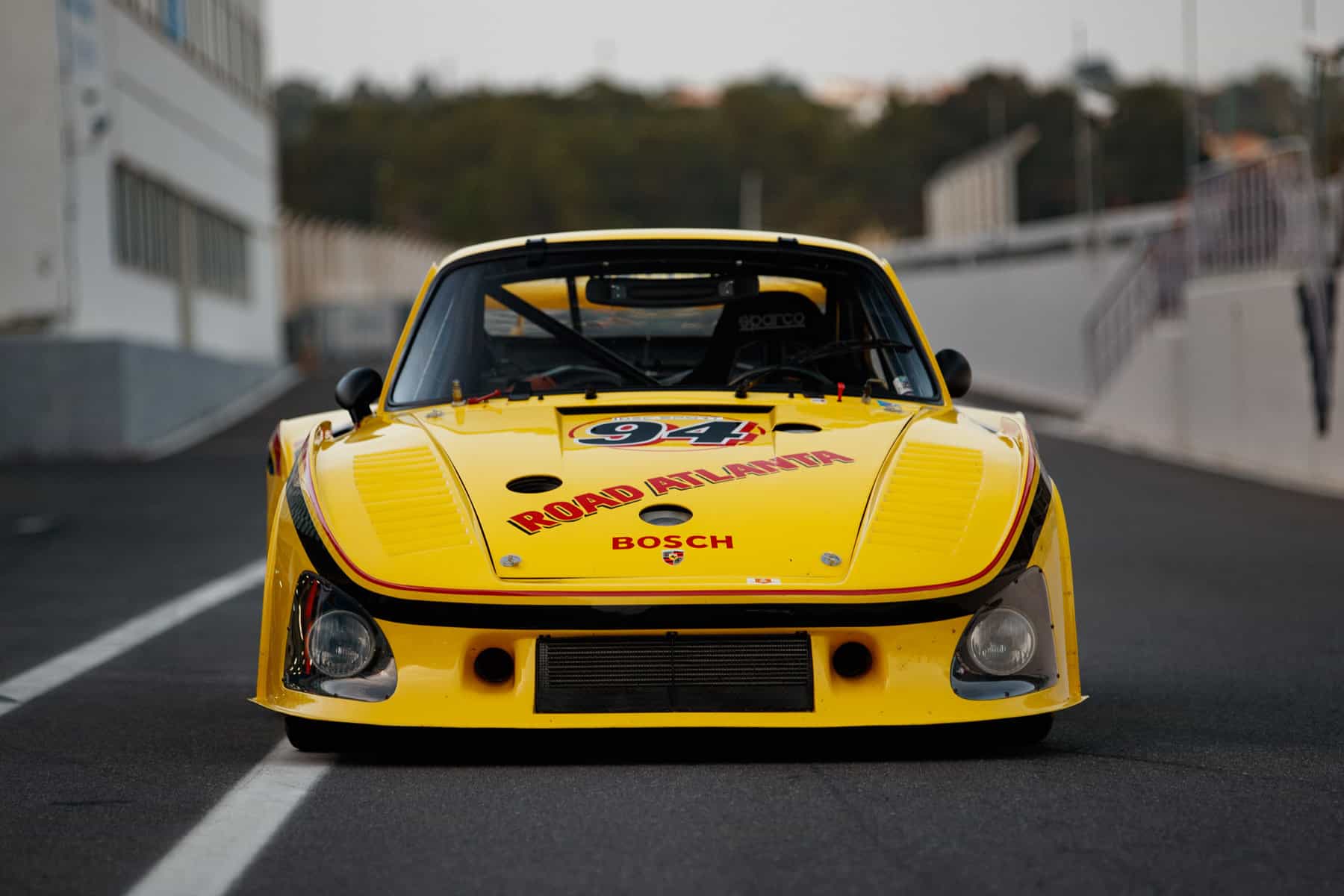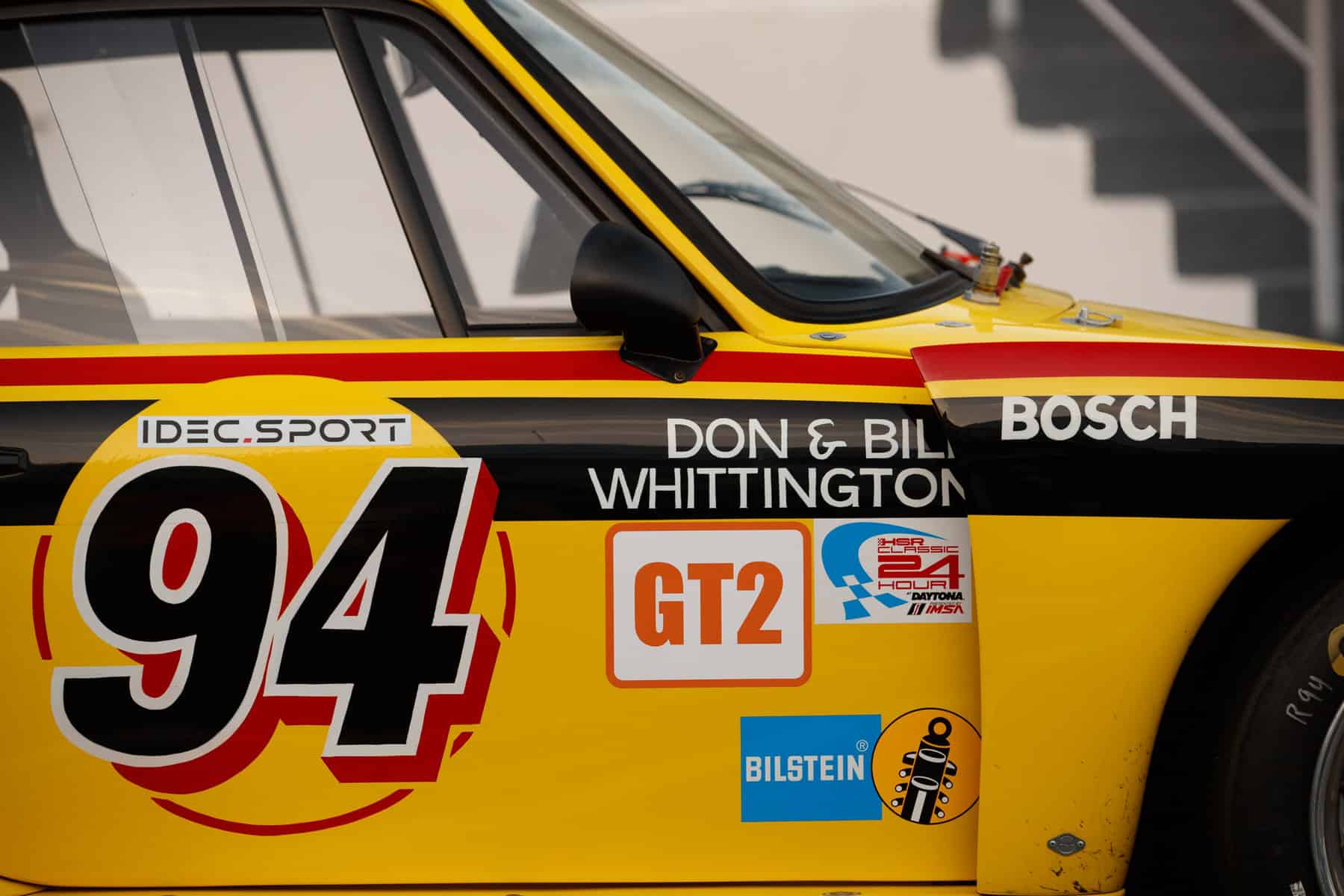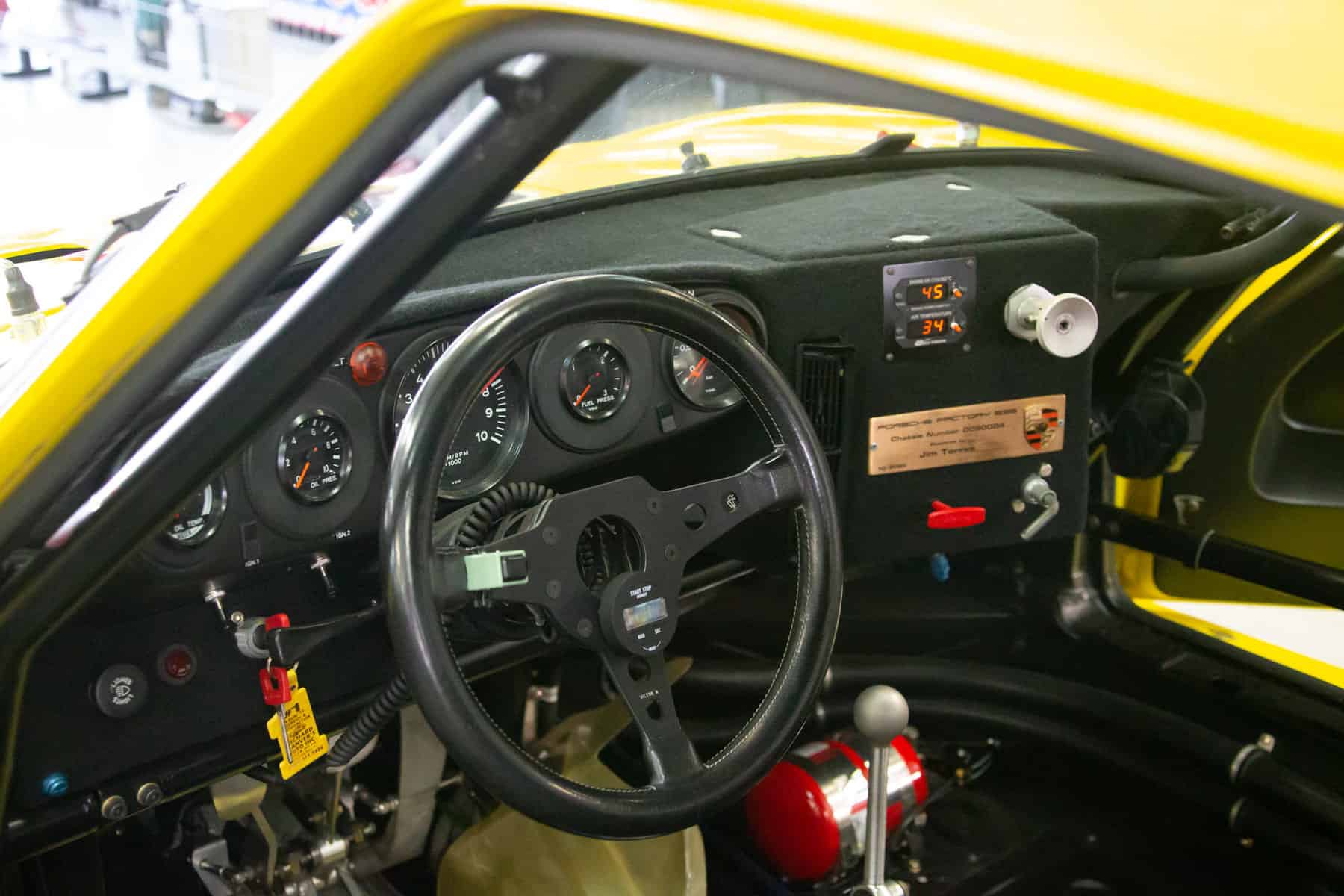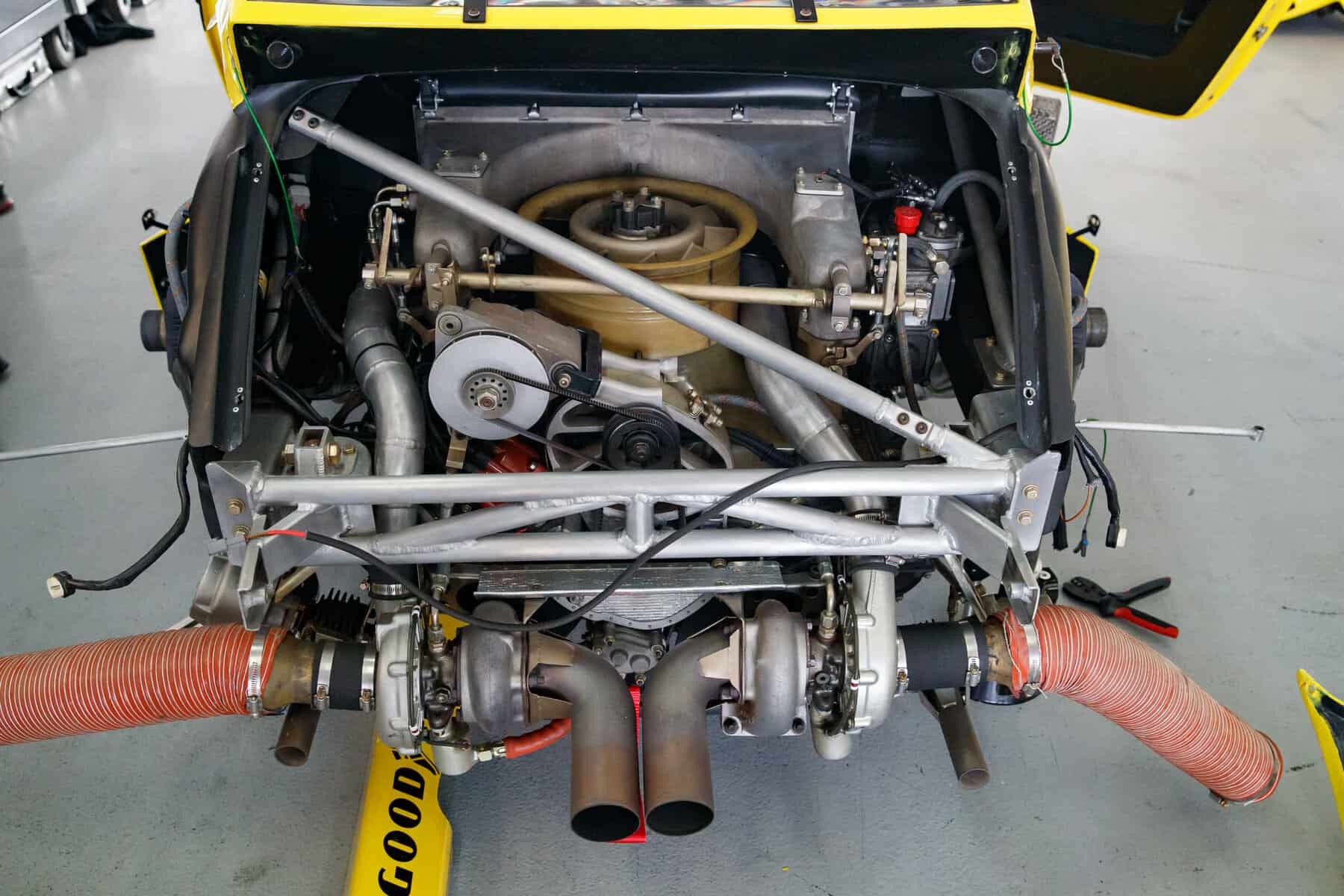Porsche 935 K3
A fascinating piece of Porsche, Kremer, and IMSA racing history
WORDS & IMAGES BY: WOUTER MELISSEN
Some competition cars have long, well documented racing histories; this Porsche 935 K3 is not one of them. In fact, it was raced so briefly that most historians failed to notice it, even though it did win the 1979 Daytona Finale.
When current owner Carlos de Quesada was offered chassis 009 0004 by Don Whittington, he reached out to Porsche directly: “I did think it was unusual that it was not in the books but the factory told me that, yes, there was a chassis that was delivered to the Whittingtons and under that number. It was a complete car, from what I understand, minus engine and gearbox.”
The two Whittington brothers, Bill and Don, had been involved in air races before switching to sports cars at the start of the 1978 season. They were very well funded but also exceptionally talented and in 1979 managed to win the 24 Hours of Le Mans outright, sharing a Kremer Porsche 935 K3 with Klaus Ludwig. “Both were serious team players at the races, eager to perform.” Former Kremer team manager Achim Stroth recalls: “It was thanks to Don and his skills as a mechanic and his motivation that the car was able to win Le Mans.”
With less than four hours to go, the 935 K3 had broken down on the Mulsanne Straight with an injection pump belt failure. As per the Le Mans regulations, the driver could not move farther than ten meters from the car, and no member of the team could get within ten meters of the car. Manfred Kremer relayed instructions over the radio to Don on how to repair the car. Stroth continues: “Following precisely the advice given by Erwin, Manfred, and the team, he got the injection pump running.” Although the team lost seventy-five minutes, the repair allowed Don to return to the pits, where a new belt was fitted and the car carried on to score a historic victory.
“Racing against them at Suzuka 1000 km (Japanese Endurance Championship, 1980), they allowed us to take urgently needed spares from their car, when they crashed early in the race – only with these parts, Kremer was able to win.” Stroth continued: “Different to some others (who needed quite some pressure to keep their promises) they did pay every single invoice – not just right way, but they did.” The two brothers were indeed later discovered to be involved with drugs smuggling and money laundering like quite a few other sports car racers of the day. Both received prison sentences, which brought a premature end to their successful racing careers.
For the 1979 season, the Whittington brothers had acquired a brand-new Porsche 935 with chassis number 930 990 0026. The 935 was based on the 911 Turbo, which was known internally as the Type 930. Courtesy of the lenient Group 5 regulations very little remained of the production road car other than the roof and the doors. Porsche had first raced the 935 in 1976, and then offered the previous year’s specification cars to customers in 1977 and 1978. Tighter IMSA regulations prompted Porsche to equip the 1979 cars destined for North America with one, instead of two turbos. After seven customer cars were built in 1979, production of complete 935s ceased.
Painted white and entered under No. 94, the new 935 was shared by the Whittingtons and Jürgen Barth. For Porsche to lend out one of their works drivers to the Whittington Bros. Racing, in what was only the team’s second year was a sign that the brothers were taken very seriously by the German manufacturer. Starting sixth, they finished a much delayed fourth overall, some sixty-two laps behind the eventual winners in a sister Porsche 935. Bill and Don Whittington were on their own for the subsequent Sebring 12 Hours. They qualified sixth but were only classified forty-second after crashing out of the race on lap 104. The following month, the brothers did manage to win the Riverside 6 Hours outright after starting seventh.
For the 24 Hours of Le Mans, they did enter their own car but instead decided to join the Kremer Racing team with their brand-new 935 K3. Brothers Manfred and Erwin Kremer were longstanding Porsche customers. Hugely competitive, they always tried to get an edge over the competition and developed their own versions of the 935. Stroth recalls: “Having raced the first privately developed Porsche 935, the K1, the 1977 K2 was a logical step to go independent, but then, when Porsche announced and sold the twin-turbo 935 for 1978, time was too short to realize plans for our own interpretation of that car.”
As Stroth explains, the work focused on the intercooler: “The air-to-air intercooler was placed behind the engine, and therefore the homologated engine cover did not fit anymore as per the Group 5 rules – that’s why Porsche and all customers had to use the air-water intercoolers as originally invented for then 934 model. Discretely, Kremer continued their basic idea, knowing the very best engine modification would be to go back to air-to-air intercoolers (as used for the K1 and as also used by Porsche for their first factory cars).” Among the advantages of running an air-to-air intercooler was a lower system weight and the intercooler performance was not affected by the rising water temperatures, resulting in more consistent power figures later in a session.
“The solution Kremer found was genius: Manfred placed the intercooler above the gearbox, meaning in front of the engine. Endless hours went into the project, because the homologated cockpit space (distance between front and rear firewalls) had to be respected, but finally, it would fit.” Stroth continues: “Running out of time for the 1978 season, the 935 K3 broke cover in 1979, and nobody was able to copy the system in time during that season, giving the Kremer K3 an unbeatable advantage over their rivals, ending up [with] Kremer selling cars and kits to quite a few people, while Porsche stopped production of customer cars.” The K3 also featured a heavily revised body, designed and built for Kremer by Ekkehard Zimmermann of DP Motorsport.
The car entered by Kremer Racing at Le Mans was built on chassis 009 0015. Porsche used seven-digit instead of ten-digit chassis numbers for cars that were sold to customers not fully assembled or even as bare shells. The chassis was turned into a proper 935 K3 racing car at Kremer Racing, using Manfred Kremer’s ingenious engine and the slippery DP Motorsport bodywork. So impressed were the Whittingtons with the K3 that they bought the car hours before the race. Ludwig had qualified it third overall, beaten only by a pair of Porsche 936 prototypes. Both 936s ran into trouble and the Kremer Racing team scored a magnificent Le Mans win. It was the first time in many decades that a production-based competition car had won Le Mans. A feat only repeated since by the McLaren F1 GTR in 1995.
For their North American racing efforts, the Whittingtons had also acquired a 935 without an engine or gearbox: chassis 009 0004. “At this point we had eight or ten engines of various different configurations in the house and Porsche was shipping these cars with the extremely large single turbo.” Whittington Racing crew chief James Weber recalls: “We had tested one of these, and found them to have a great amount of lag. We determined it was better to stay with the twin turbo, and deal with the weight penalty prescribed by IMSA as the engines were much more easily driven.”
It is fortunate that Weber kept detailed records as observers confused 009 0004 with 935 990 0026 at every outing. It was first raced at Road Atlanta in April 1979, where it finished third in the hands of Don Whittington. He also finished fourth at Laguna Seca, while Bill retired from the second Road Atlanta race in 009 0030. For the Daytona Finale 250 Miles race at the end of the 1979 season, the team fielded two 935 K3s. Don entered the Le Mans winning car, which was now painted yellow and wore the No. 93 start number. The No. 94 car was entered for Bill and was again 009 0004 confused as 930 990 0026. It had now benefited a full upgrade to 935 K3 specifications.
It was Don who was fastest of all during qualifying with the Le Mans winning 935 K3. Bill would start the race in third in the other 935 K3, while brother Dale Whittington had set the ninth fastest time with an earlier 1978-specification 935. During the 250-mile race, it was Bill who emerged in the lead and he would take the victory with a four-second margin over Don, while Dale retired early on. Unfortunately the victorious chassis 009 0004 would not make it to the winner’s circle. The race had been red-flagged due a late rainstorm. This nevertheless caught out several drivers, causing an accident that Bill could not avoid, causing considerable damage to the front, left-hand side of the car.
With spare shells readily available, the Whittingtons decided to remove all usable components and set chassis 009 0004 aside. It was not discarded but placed in storage as the Whittington Racing team forged ahead. “There were rumors about this car and a lot of other stuff that the Whittingtons had,” Porsche specialist Jim Torres explains. “Rumors of a big tractor trailer full of parts and cars. Everybody was trying to get to this stuff, and I was one of the ones trying to get to it as well.” Florida-based Porsche mechanic Richard Danvers did get in touch with Don Whittington and managed to broker a deal between Whittington and Carlos de Quesada, who eventually bought the car in 2019.
The shell was stored in a hangar at the Fort Lauderdale executive airport and was finally removed from hiding with a forklift. The damage was still clearly showing but, crucially, the right-hand chassis was still intact and showed the 009 0004 stamping. Even before he bought the car, de Quesada had already reached out to Torres: “I semi-retired back in 2001, and told him, Carlos ‘I’m not doing this work anymore.’ So he says, ‘Jim, you gotta help me on this’. I said, ‘but Carlos’, he says, no, ‘Jim, you gotta understand you, you have to help me on this project’.” Torres recalls: “I knew that if I got involved with a project, he would want to do it a hundred percent correctly, which would involve countless hours.”
Torres clearly was the right guy for the project: “We have been working on Porsches for over forty years. Throughout all those years we have learned a lot about how important it is to retain the original chassis and not replace the chassis like a lot of guys would have done in this case.” Torres continues: “We took the chassis and the only significant panel that was replaced was the left wheelhouse panel. The rest of the chassis was on a Celette frame bench, and we just did all the pulling and straightening and hammering and shaping and brought it back to where it was supposed to be, to line up to all the original mounting points. It took a serious amount of focus and dedicated work, six to seven days a week to complete this project.”
Once the chassis was straight, the next task was to find all the correct parts to make it a complete car again. “There was some old used stuff out there that was not safe and not worthy of using for this car. I have owned several 935s myself and have collected a lot of parts over the years. So I still had a lot of that stuff that I was able to contribute to the project to bring this thing back to where it is today.” Torres continues “We had to make sure that everything was absolutely the best it could be for this project. I built him an engine and we managed to find the upside-down gearbox, which is extremely rare. We manufactured the titanium axels and the hub assemblies. I was able to source the brake calipers from a company in Germany.”
Once the work was finally completed, the 1979 Daytona Finale winning 935 K3 was shown at the Amelia Island Concours d’Elegance. It was well received as Torres explains: “People were excited about the fact that this car that had been off of the radar for around forty years and has now come back to life.” After showing the car at Amelia Island, de Quesada has also raced it in historic events on both sides of the Atlantic: “It drives so well, it is phenomenal. I have owned a number of 935s and have always enjoyed vintage racing them.” After an outing at Estoril in Portugal toward the end of the 2022 season, the 935 K3 has remained in Europe and will be raced by de Quesada in 2023 at a variety of events including the Le Mans Classic before returning Stateside for the Rennsport Reunion.
Despite the long hours and big bills, both Jim Torres and Carlos de Quesada are extremely proud of reviving this fascinating piece of Porsche, Kremer, and IMSA racing history: a real labor of love that we can now finally enjoy and appreciate for what it really is.


